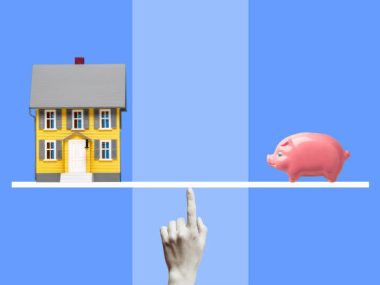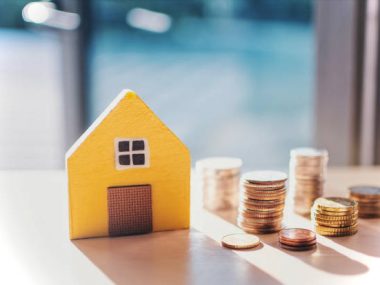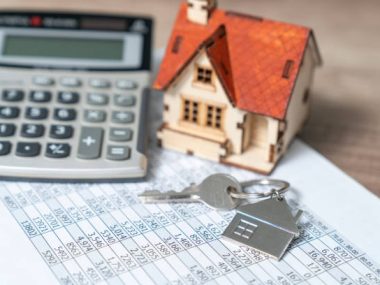Can a reverse mortgage be refinanced? Reverse mortgages are financial arrangements designed to provide homeowners aged 62 and older with a way to access the equity in their homes.
These loans allow seniors to convert a portion of their home’s value into tax-free cash, without the need to sell their property or make monthly mortgage payments.
While reverse mortgages offer financial flexibility and security, questions often arise about whether they can be refinanced, just like traditional mortgages.
Reverse mortgage refinancing refers to the process of replacing an existing reverse mortgage with a new one.
Just as with conventional mortgages, homeowners may wonder if they can take advantage of better terms, lower interest rates, or different loan options by refinancing their reverse mortgage.
In this article, we will delve into the key aspects, benefits, challenges, and considerations associated with this financial maneuver.
Understanding the implications of reverse mortgage refinancing can empower homeowners to make informed decisions that align with their financial goals and circumstances.
Also Read:
Who Owns the House in a Reverse Mortgage?
What Is a Purchase-Money Mortgage? (All You Should Know)
Can a Reverse Mortgage Be Refinanced?
Reverse mortgages can indeed be refinanced, although the process and considerations differ from traditional mortgage refinancing.
A reverse mortgage refinancing involves replacing an existing reverse mortgage with a new one, aiming to secure better terms, lower interest rates, or different payout options.
Homeowners considering this option should evaluate factors such as their current age, home value, interest rates, and loan balance.
Refinancing a reverse mortgage can offer several potential benefits, including increased cash flow, reduced interest costs, or a change in payment structure.
However, it’s crucial to assess the costs associated with refinancing, such as closing costs, origination fees, and potential changes in the loan’s terms.
Eligibility requirements for reverse mortgage refinancing may also depend on factors like the property’s value, the borrower’s age, and the amount of equity available.
Homeowners contemplating reverse mortgage refinancing should weigh the pros and cons carefully and consider seeking advice from financial experts or counselors.
Since regulations and loan programs can change, staying informed about the latest options and regulations is essential.
Overall, while reverse mortgage refinancing offers potential benefits, a thorough analysis of individual circumstances and a clear understanding of associated costs are vital in making a well-informed decision.
Factors Influencing Reverse Mortgage Refinancing
Several key factors influence the decision to refinance a reverse mortgage.
Firstly, prevailing interest rates play a significant role.
If interest rates have dropped since the initial reverse mortgage was obtained, refinancing might be beneficial to secure a lower rate, potentially reducing interest costs over the loan’s lifespan.
The current age of the homeowner is another crucial factor.
Older homeowners may have more favorable terms for refinancing, as they can access a larger portion of their home’s equity and potentially qualify for higher loan amounts.
Home value is also pivotal. If the property’s value has appreciated since the original reverse mortgage was established, homeowners might be eligible for a larger loan amount upon refinancing.
Conversely, a decrease in home value could impact refinancing options.
Loan balance matters, as it affects the available equity.
If the outstanding loan balance has significantly decreased, refinancing might provide better terms or a greater lump-sum payment.
Additionally, changes in personal financial circumstances, such as improved credit or the need for additional funds, can influence the decision to refinance.
However, homeowners should carefully consider the costs associated with refinancing, including closing fees, insurance premiums, and origination charges.
Overall, the interplay of interest rates, age, home value, loan balance, and individual financial needs collectively shape the decision to refinance a reverse mortgage.
A comprehensive assessment of these factors is essential to determine whether refinancing aligns with the homeowner’s goals and financial situation.
Pros and Cons of Refinancing a Reverse Mortgage
Refinancing a reverse mortgage offers potential advantages such as securing lower interest rates, increased cash flow, or adjusting payout options to better suit financial needs.
It can also allow access to a larger portion of home equity if property values have risen.
However, the decision should be weighed against potential downsides. Prospective benefits must outweigh costs like closing fees, origination charges, and insurance premiums.
Moreover, the older the homeowner, the more favorable terms may be, making timing crucial.
Clear evaluation of individual circumstances and consideration of long-term financial objectives are essential to determine whether reverse mortgage refinancing is a suitable choice.
The Process of Refinancing a Reverse Mortgage
Refinancing a reverse mortgage involves several steps.
First, homeowners must research and compare available lenders and loan options.
After choosing a lender, an application is submitted, requiring documentation of financial details, property information, and eligibility verification.
An appraisal assesses the current home value. If approved, the closing process begins, including signing new loan documents and paying associated fees.
The existing reverse mortgage is paid off, and the new loan terms take effect.
Homeowners then receive any remaining funds or adjustments as agreed.
It’s crucial to carefully consider costs, benefits, and timing before proceeding with the refinancing process.
Eligibility Criteria for Reverse Mortgage Refinancing
Eligibility for reverse mortgage refinancing typically hinges on several factors.
Homeowners should meet the minimum age requirement (usually 62 or older) and possess sufficient home equity.
Creditworthiness may be considered, although credit score thresholds tend to be more lenient compared to traditional mortgages.
The property must also meet certain criteria, including being the primary residence and complying with property standards.
Loan-to-value ratios and existing loan balances are evaluated to ensure the potential refinancing aligns with financial guidelines.
Before pursuing reverse mortgage refinancing, homeowners should carefully review lender-specific eligibility standards and assess their own financial situation.
Also Read:
Can I Get a Mortgage with Bad Credit in Canada?
Do You Still Pay a Mortgage Lender If They Go Bankrupt?
Conclusion
The possibility of refinancing a reverse mortgage offers a pathway for homeowners aged 62 and older to enhance their financial circumstances.
By considering factors such as prevailing interest rates, age, home value, and loan balance, individuals can make informed decisions about whether refinancing aligns with their goals.
While potential benefits like reduced interest costs and improved cash flow are enticing, careful evaluation of associated costs, eligibility criteria, and individual financial needs is crucial.
As regulations and programs evolve, staying informed and seeking guidance from financial professionals can empower homeowners to navigate the complexities of reverse mortgage refinancing and make choices that suit their unique situations.






